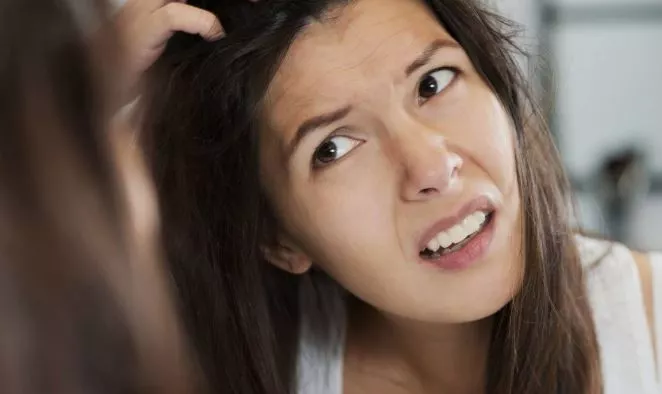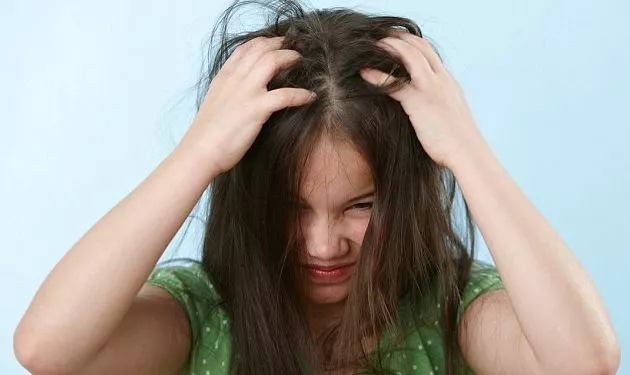How to Prevent Lice Eggs From Hatching in the Hair?
Because lice eggs are so tiny, you would never be able to tell if they hatched. The only method to stop them from hatching would be to remove them with your fingertips or a strong metal nit comb. Nits are laid by the mother and adhered to the hair shaft using a glue she creates.
If you’ve found lice in your hair, you’ve probably wondered how to stop the lice eggs from hatching. Several ways to treat this problem include insecticides, nit combs, or a box. Here are a few tips:
Using insecticides
Insecticides have long been the treatment for head lice, but many parents are now choosing non-toxic alternatives. In addition to a lack of effectiveness, lice have resisted pyrethrins, a synthetic pyrethroid insecticide, and permethrin. Unfortunately, some lice populations have also tested positive for these over-the-counter products.
The best way to prevent the spread of head lice is to thoroughly clean and inspect bedding and clothing, especially those that are not easy to wash. In addition to cleaning and laundering bedding and clothing, parents should also check the contents of stuffed animals and duvets. If the stuffed animals have been exposed to pesticides, they should not be used. The only way to kill lice is to clean them thoroughly.
Insecticides are not the best solution for head lice because they are toxic when inhaled or absorbed through the skin. However, fumigating treatments can prevent the spread of head lice and stop the spread of this disease. But what if your child is infected with lice? The best way to protect yourself from lice is to be as clean as possible and tell your friends and teachers so that they can check you out.
Insecticides do not kill head lice but are highly flammable and can cause fires if misused. Avoid suffocating treatments if possible. These treatments require plastic wrap to keep the lice eggs in. Those products are not FDA-approved and should not be used by anyone without professional medical supervision. Also, they can be hazardous and result in severe burns or even death.
Using nit removers
Using nit removers to treat a lice infestation can effectively prevent eggs from hatching in the hair. Therefore, most lice removal products should be used on the scalp after applying them to the hair. However, retreatment is necessary if the lice are still present after using a nit remover. Lice will start laying eggs about nine days after hatching, so it’s essential to remove them at this time. The treatment should be repeated seven to 10 days after the first application.

Although many nit removers are available on the market, not all are effective. Many are poorly designed, causing discomfort during use and damaging hair shafts. Using nit removers is not easy, so many consumers prefer to use specialist combs to rid their hair of lice. However, this can be costly for households with regular outbreaks.
Lice eggs are called nits. These small, glue-like structures attach themselves to the hair of the mother. This glue makes it impossible for the nit to fall off without physical removal. So, a lice remover is the only way to avoid confusion. In addition, a nit remover will help you eliminate lice eggs in your hair before they hatch.
Using nit combs
Using nit combs to remove head lice and prevent the eggs from hatching in the hair effectively prevents recurrence. The combs are designed to sift through the hair to prevent nits from hatching. You should insert the comb near the scalp and slant it so that the curved side faces towards the head. Rinse the comb out after each stroke.
However, it is essential to remember that rewashing your hair will reduce the effectiveness of your medicine. Therefore, it is recommended that you use the nit comb at least once every two to three days to ensure that the lice eggs do not hatch. Ideally, it would help if you used the nit comb to comb the hair daily for two to three weeks or more. Some medications may require a second treatment in nine to 10 days.
If you suspect that you have head lice, you should wash the affected area with a solution of vinegar and water. The vinegar will loosen the glue that holds the nits to the hair shaft. Then, use nit combs to remove the nits from the hair. Metal nit combs are ideal for this job. Finally, if all else fails, you can try picking out the nits by hand.
Using a box
To get rid of head lice, you need to know how long they live on the human body. Head lice develop in three phases: egg, nymph, and adult. Eggs are miniature and glued to the hair shafts. Hatched eggs take approximately 4 to 10 days to develop into lice and reach adulthood. Lice eggs can live for a total of thirty days.

Some parents resort to using medicated head lice shampoo or creams. This is available over-the-counter or prescription and should be used as directed. Medicated shampoos and creams work by killing live lice. Unfortunately, they also kill the eggs, so be sure to follow the directions on the label. In addition, some prescription drugs and non-prescription head lice treatments require retreatment after 7-9 days. This is necessary to kill any remaining lice.
Adult female lice lay around seven to ten eggs per day on human hair. These are attached with a glue-like substance near the scalp and remain in place for seven to 10 days. While some adults pop nits to ensure they are not dead, this method is not recommended for children. Lice eggs can be infected by casual contact. While there are effective treatments for lice, it is essential to remember that the infestation can return.
Using a cap
The first step in eliminating head lice is removing the infection source, which is the hat. Lice can only live on the head of a human being for 48 hours, so they cannot survive in furniture or other items. In addition to clothing, furniture can harbor head lice, so lice must be removed from these surfaces to eliminate the infection. However, some cases call for using a chemical product to kill the lice.
If you’ve found head lice, use a hat to protect yourself. The lice eggs will hatch in the hat if a human host is nearby. However, lice cannot live in a hat for that long if the person wearing it has a head full of hair. A hat can protect against lice eggs if it is clean and doesn’t harbor a louse.
Lice are spread through head-to-head contact and personal care items. Stay away from furniture, carpets, and pillow covers used by someone with lice. If you’re concerned about the spread of head lice, you can ask an adult to check your hair every three or four days. In addition, it’s a good idea to tie long hair back to prevent it from spreading and causing lice.


















